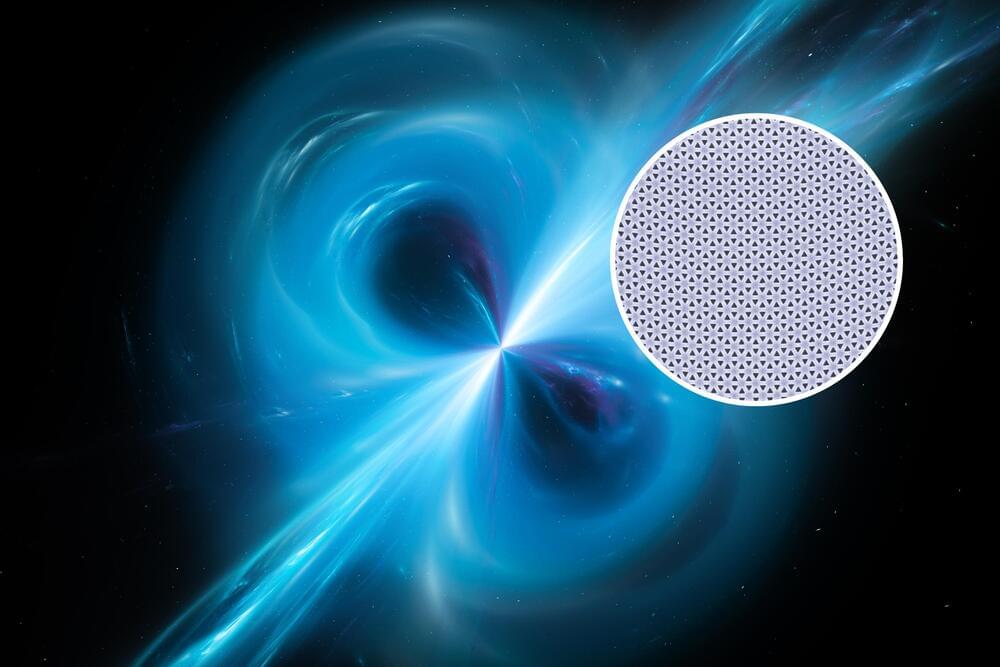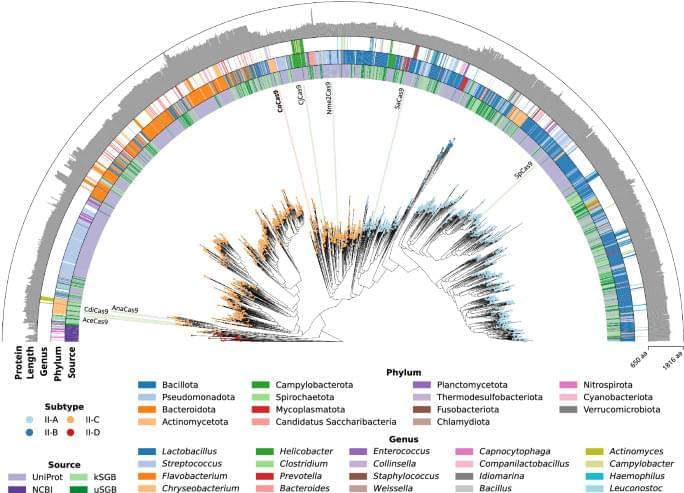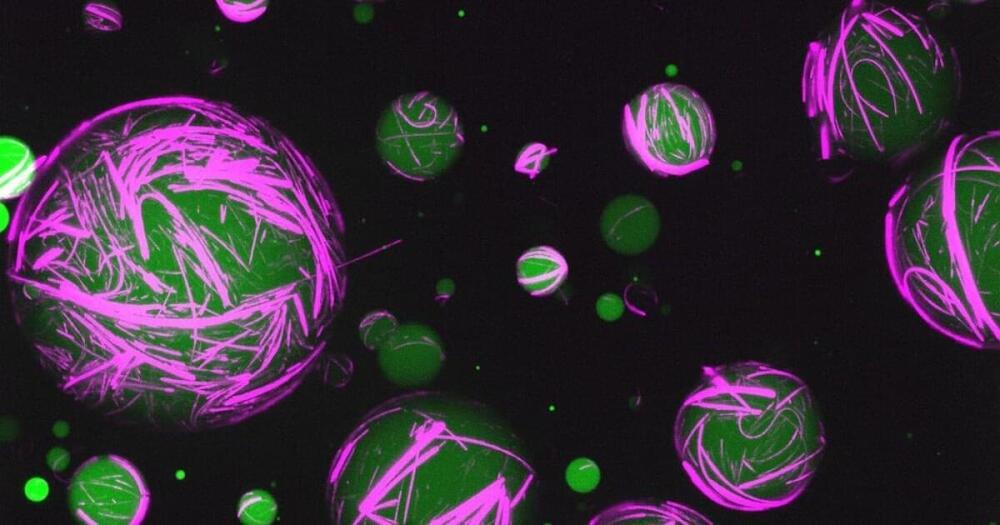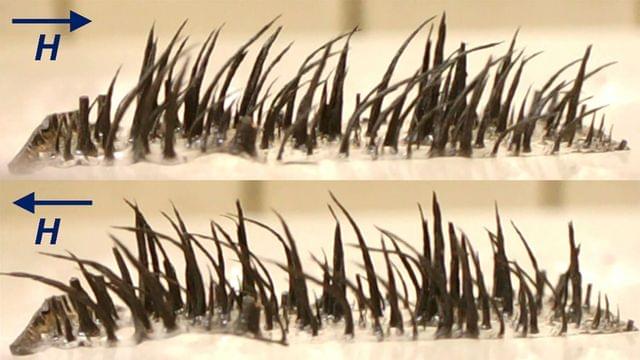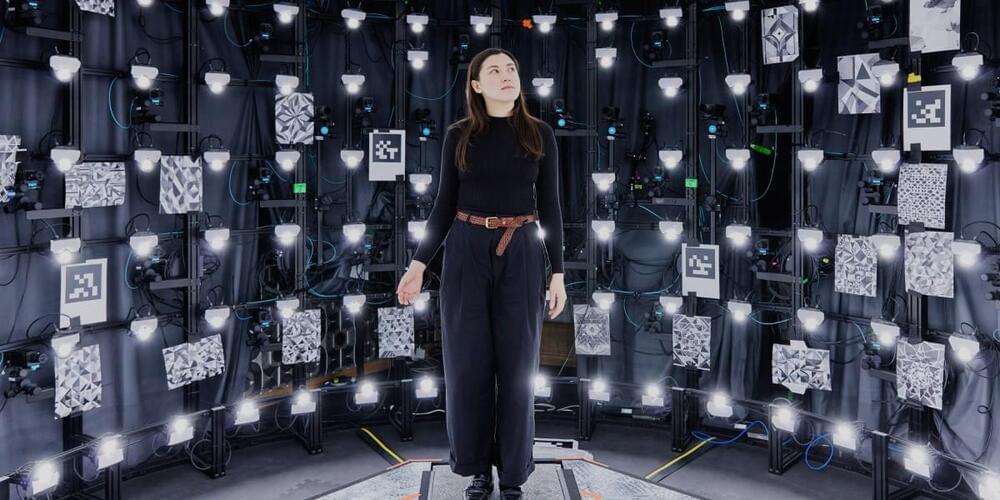The bizarre feat can be achieved in special, two-dimensional crystals by deforming them only slightly, a new study discovered.
Cas9 nucleases hold clinical significance for genome editing therapies. Here the authors characterize CoCas9, a compact, efficient and precise Cas9 from the human microbiome, and show that delivery via AAV vectors enables efficient editing in the mouse retina, expanding the genome editing toolbox.
Scaling up qubit counts in quantum computers is at the core of achieving quantum supremacy.
Among the troublesome hurdles of this scaling-up race is refining how qubits are measured. Devices called parametric amplifiers are traditionally used to do these measurements. But as the name suggests, the device amplifies weak signals picked up from the qubits to conduct the readout, which causes unwanted noise and can lead to decoherence of the qubits if not protected by additional large components. More importantly, the bulky size of the amplification chain becomes technically challenging to work around as qubit counts increase in size-limited refrigerators.
Cue the Aalto University research group Quantum Computing and Devices (QCD). They have a hefty track record of showing how thermal bolometers can be used as ultrasensitive detectors, and they just demonstrated in an April 10 Nature Electronics paper that bolometer measurements can be accurate enough for single-shot qubit readout.
Using DNA and proteins, scientists have created new synthetic cells that act like living cells. Blurring the line between artificial and living materials, these cells can be reprogrammed to perform multiple functions, opening the door to new synthetic biology tech that goes beyond nature’s abilities.
Cells get their structure and stability from their cytoskeleton, a crosslinked framework of proteins that encases and protects other components. Depending on the type of cell, this cytoskeleton can be flexible to different degrees and respond in different ways to their environment, giving cells their specialized abilities.
For the new study, scientists from the University of North Carolina at Chapel Hill developed synthetic, self-assembling cytoskeletons, built out of DNA, peptides and other genetic material.
Researchers have developed a new technique that can “reprogram” magnetic cilia to move in new directions as needed. Magnetic cilia – an artificial hair-like structure containing embedded magnetic particles – are used frequently in soft robots, transporting objects and mixing liquids.
Synthesia’s new technology is impressive but raises big questions about a world where we increasingly can’t tell what’s real.
In many high-stakes situations, large language models are not worth the risk. Knowing which outputs to throw out might fix that.
The agency opened the probe in 2021, and reviewed hundreds of crashes that involved Autopilot. It says there’s a ‘critical safety gap.’
The OpenAI Startup Fund, a venture fund related to — but technically separate from — OpenAI that invests in early-stage, typically AI-related companies across education, law and the sciences, has quietly closed a $15 million tranche.
According to a filing with the U.S. Securities and Exchange Commission, two unnamed investors contributed the $15 million in new cash on or around April 19. The paperwork was submitted on April 25, and mentions Ian Hathaway, the OpenAI Startup Fund’s manager and sole partner.
The capital was transferred to a legal entity called a special purpose vehicle, or SPV, associated with the OpenAI Startup Fund: OpenAI Startup Fund SPV II, L.P.
xAI, Elon Musk’s 10-month-old competitor to the AI phenom OpenAI, is raising $6 billion on a pre-money valuation of $18 billion, according to one trusted source close to the deal. The deal — which would give investors one quarter of the company — is expected to close in the next few weeks unless the terms of the deal change.
The deal terms have changed once already. As of last weekend, Jared Birchall, who heads Musk’s family office, was telling prospective investors that xAI was raising $3 billion at a $15 billion pre-money valuation. Given the number of investors clamoring to get into the deal, those numbers were quickly adjusted.
Says our source, “We all received an email that basically said, ‘It’s now $6B on $18B, and don’t complain because a lot of other people want in.”
